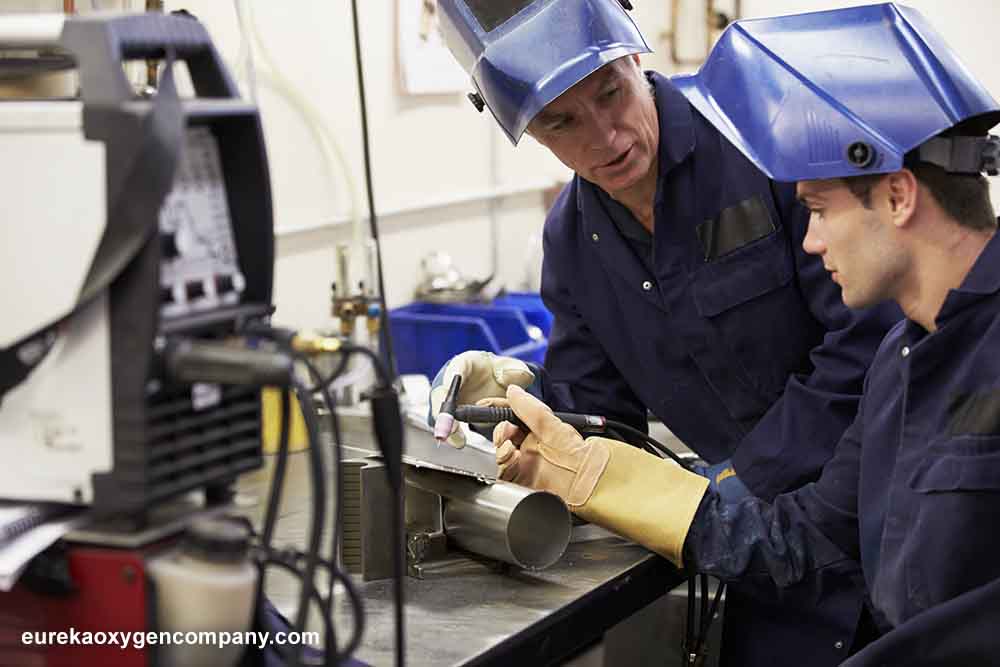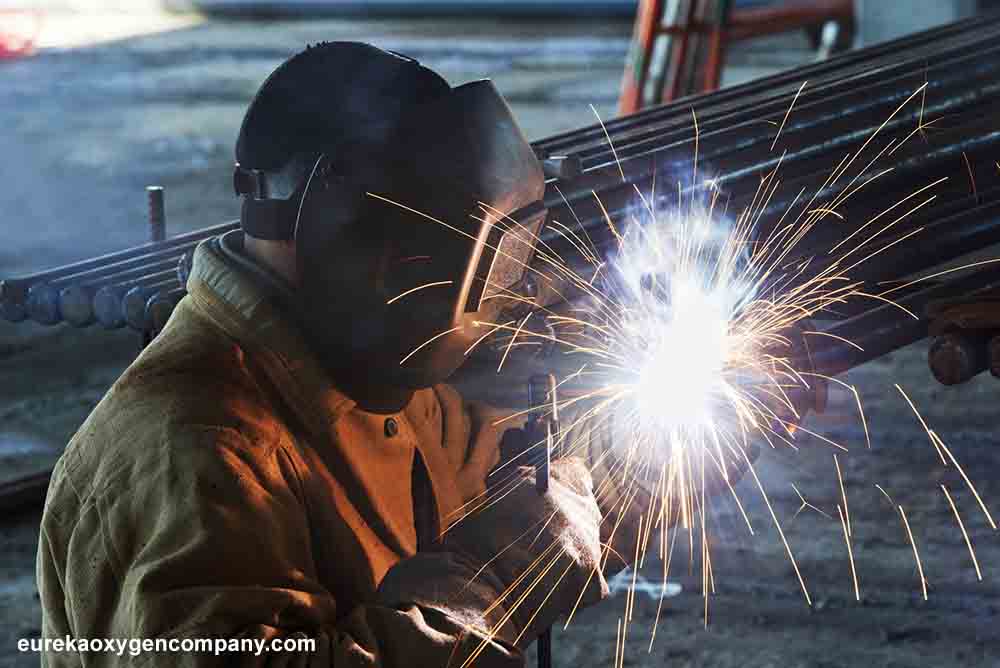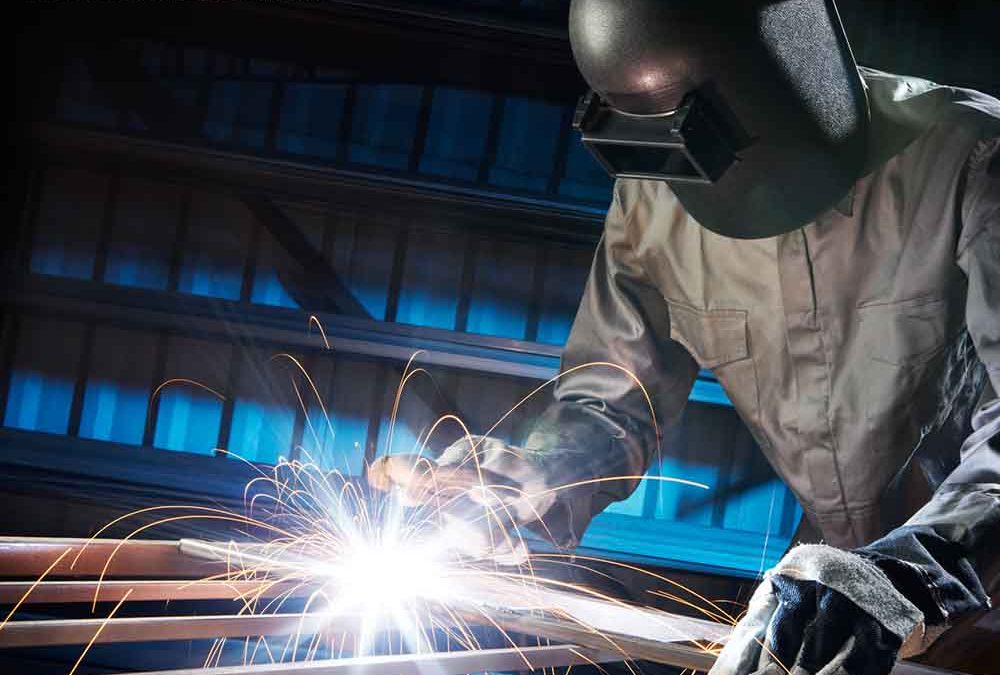Don’t let welding intimidate you out of doing it yourself, trying it at home. Whether you plan on being entirely self-taught or YouTube taught, or learn at a vocational school, adult school, or community college, it is going to take some consistent practice to get good at it (like anything worth getting good at). The type of welding you choose to start with and the equipment with which you choose to do it can contribute to both your initial success and your accelerated improvement.
MIG and FCAW are optimal choices for beginning welders. They both feature a wire feed that is both the electrode providing the arc and the filler material for the weld. The difference between them is the way they shield the weld from contaminants in the air around the weld.
MIG stands for Metal Inert Gas. The afore-mentioned electrode (which comes in a wire spool) is the metal, and a variety of gases can be used, either individually or in combination. The best recommendation for the beginning welder using MIG is to use 100% CO2. CO2 has high thermal conductivity, which will result in broader, deeper weld penetration. One thing to keep in mind while using wire-feed welding methods (which applies to FCAW also) is that as long as the trigger is depressed, the wire will continue to feed. So, if the trigger is pulled, the welding head needs to be moving – at a steady travel angle (10% maximum) and at a steady speed along the weld path.

FCAW stands for Flux-Cored Arc Welding. That flux core is contained in the wire used for this method and eliminates the need for shielding gas. The flux, as it melts into the weld along with the metal, protects the weld from contamination. The wire itself is more expensive than comparable wire for MIG welding, but since there is no shielding gas required, there is a trade-off, monetarily. As with MIG welding, the travel angle should be between 0 and 10 degrees. If it is more than 0 degrees, that lean should be in the direction of travel. You want to pull the bead of the weld, not push it.

Whichever of these methods you choose to begin with, there are certain basics to be kept in mind regarding preparation and operation. Arc welding is obviously based on electricity. To complete the circuit for a welding operation, the wire lead (the other wire beside the one attached to the welding head) has a clamp which must be attached to the base metal (out of the way of the weld). The pieces being joined should be prepared by beveling the edges to be joined. 45 degrees is the optimum for this bevel, contributing to weld depth. The metal pieces to be joined should also be cleaned (removing any slag, dust, or oil) before welding begins.
Welding provides endless opportunities for learning in the pursuit of improved and expanded skills. Feel free to contact Eureka Oxygen for suggestions based on your needs and expectations.
Don't Be Shy
Eureka Oxygen is your one-stop shop for cannabis extraction supplies, welding equipment, and expert guidance.
Small task or big project?
It doesn’t matter; we have what you need.

